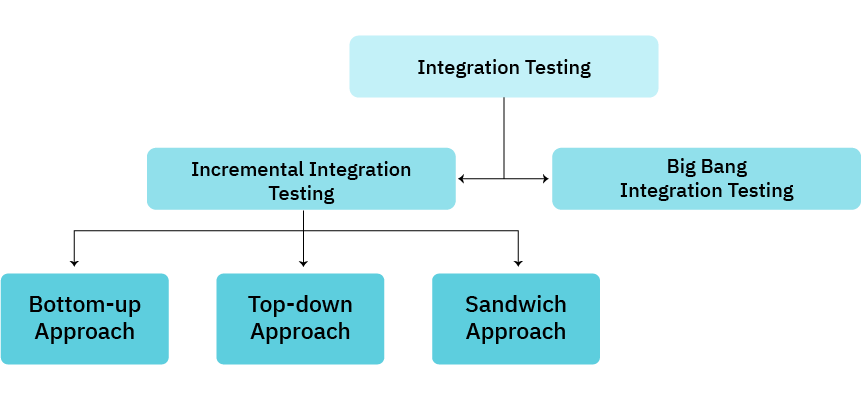A vital component of software quality assurance that is sometimes missed by an inexperienced eye is integration testing. This testing acts as the quiet watchdog, protecting against the disorganized chaos that results from different modules trying to merge into a single, logical entity.
About Integration Testing
The practice of assessing a software application’s user interface by combining several modules, applications, or components is known as integration testing. The second step in the software testing procedure is integration testing. It occurs immediately following unit testing and prior to system testing. To put it in simple terms, integration testing demonstrates to the team of testers how well different components interact.
Types of Integration Testing
Some different types on integration testing are:
- Incremental Testing: This is the process of testing two or more modules that have been logically joined. The primary benefit of incremental testing is its ability to identify flaws early on since it involves a step-by-step analysis of integrated applications. Another way to categorize incremental testing is as
- Bottom-Up Testing: This kind of testing begins with the architecture’s lowest level module. From the bottom of the hierarchy, control moves up towards the top. Bugs can be immediately rectified because they can be implemented on early stages. Stated differently, less effort must be spent on identification and troubleshooting.
- Top-Down Testing: The top module is tested first in a top-down method. The testing control moves from the top towards the bottom. Using the control flow of the architectural framework, modules undergo evaluation top to bottom via integration in the top-down manner.
- Sandwich Testing: This methodology, which integrates top-down and bottom-up testing techniques, is also frequently referred to as hybrid integration testing. Here, the integration process starts at the intermediate layer (downwards), and testing takes place in both directions: upwardly towards higher-level modules and downwards towards lower-level modules. Testing control incorporates the advantages of the two top-down and bottom-up methodologies and speeds up integration testing of the module’s interfaces since it flows both upward and downward.
- Big Bang Testing: This kind of testing, which is also non-incremental, is carried out after the system has been put together with all its components. Put another way, each module is tested as a single unit after being merged with the others. Smaller systems are ideal candidates for this kind of testing.
How Can Opkey Help?
With Opkey, you can test software from beginning to end and ensure high-quality delivery thanks to several features it offers:
- No-code automation: Opkey’s user-friendly interface takes away any additional complexity and provides a clear overview of all test cases in a multi-variant representation.
- Cross-technology capabilities: Whether using a desktop program, a browser, or a mobile device, Opkey gives you access to all the technologies you need for your end-to-end process.
- Integrates with the CI/CD pipeline: Opkey connects with a wide range of technologies to help make your workflow more flexible and less complicated.
See also : Step By Step Software Courses That Anybody Can Follow
Conclusion
Integration testing improves the reliability of the software, allowing the end-user to have a frictionless journey. Amidst the complex network of software integration, Opkey stands as a beacon of efficiency, streamlining testing efforts and fostering software harmony with its robust automation capabilities. Opkey has helped hundreds of major enterprises achieve the desired level of speed, accuracy, and test coverage that they have been looking for to accelerate their testing cycles and reap the real benefits of automation.







